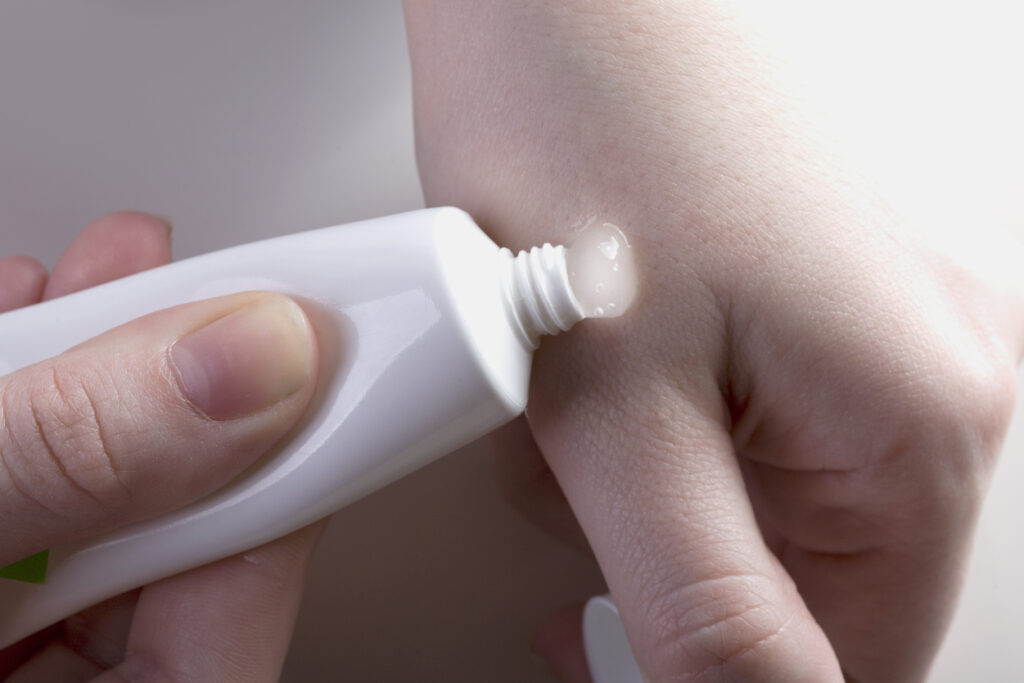I represent a Pharmaceutical company
Transdermal delivery of drugs enables a controlled release of the active substance, avoiding first-passage metabolism in the liver. In addition to topical patches, for a systemic effect, it is also possible to achieve a local effect, commonly using gels or creams. However, the efficient barrier properties of the skin make it difficult to develop formulations for transdermal delivery, not to mention understanding how they function.
→ Understand your permeation challenge
→ Understand your transdermal formulation
→ Molecular modeling as a complement to existing development processes

Understand your permeation challenge
The passive transport of an API across the human skin barrier is a complex process which is very challenging to study in detail relying solely on experimental methods.
Using our atomistic skin model we can deliver a predicted permeation rate of your API across the stratum corneum, in silico, together with data describing its interaction with the barrier structure, thus identifying the rate-limiting regions of the permeation process.
This data enables us to help you make informed decisions in regards to the identification of the permeation challenges unique to your API, and serves as a guide in the design of an optimal transdermal formulation.


Understand your transdermal formulation
With our model of the human skin barrier we are able to predict where in the barrier the formulation excipients are active, which is of utmost importance when designing an effective transdermal delivery system for your API.
Our atomistic resolution model gives us detailed information regarding the excipients interactions with the barrier structure, and their effect on your APIs predicted partitioning from the formulation.
Taken together, this data can then be used to identify the concentration of each excipient in your formulation that optimizes the API solubility, as well as its partitioning, which will make it possible to improve the flux across the skin.
Molecular modeling as a complement to existing development processes
A successful development of a transdermal drug formulation not only requires a solid understanding of the processes involved in the mechanism of action of the API, but also an optimized delivery vehicle across the human skin barrier.
Relying solely on conventional experimental techniques during the development of a transdermal delivery system for an API offers limited insight into the molecular interactions during the permeation process.
Using our skin model we can deliver data which complements your existing knowledge, and will enhance your underlying data sets. This will help you in the decision process during the various stages of preclinical drug development. The increased functional understanding of the permeation enhancing ability of your formulation will also help your case when filing applications to the relevant drug regulation authorities, as well as patent applications.
